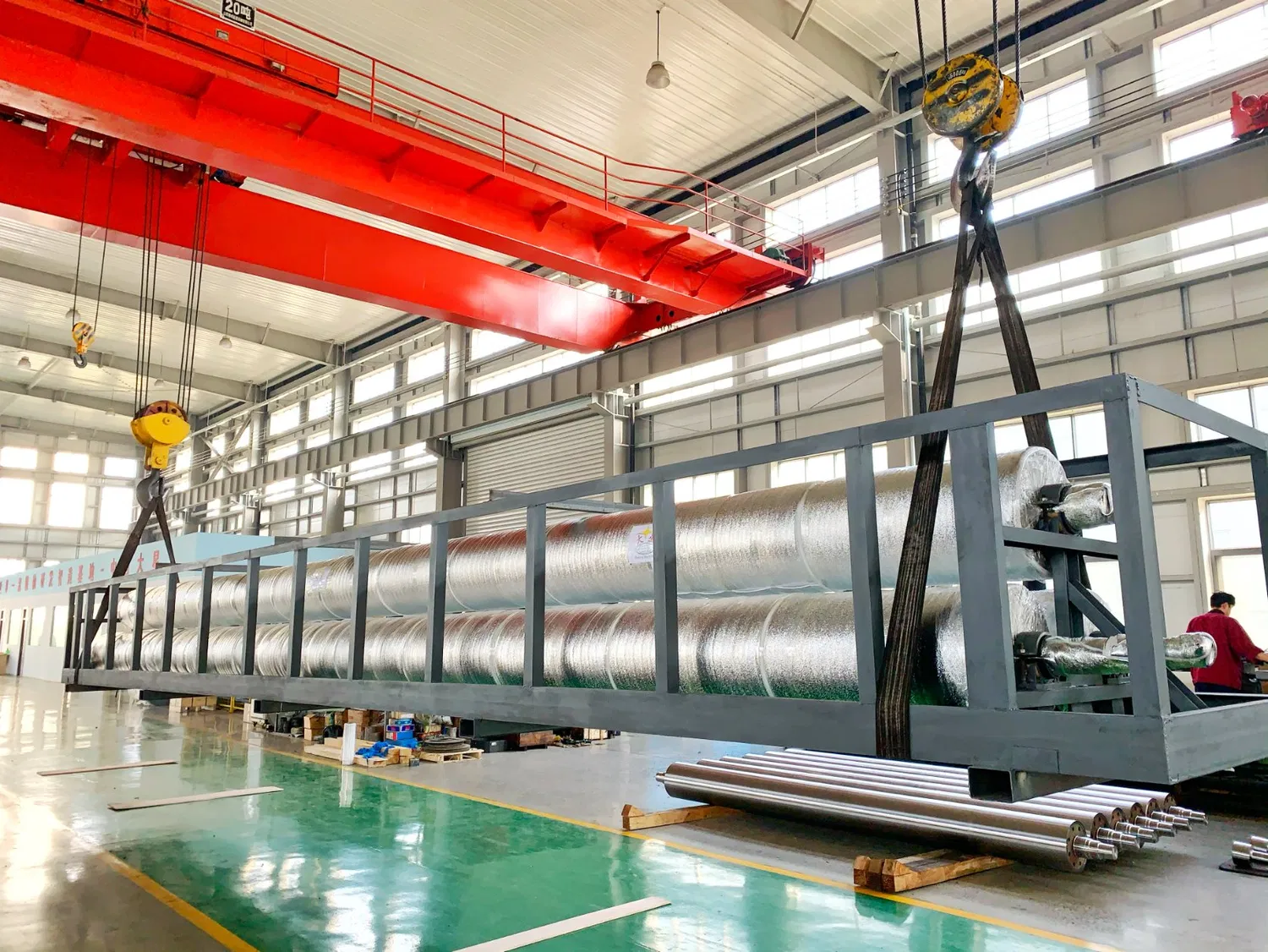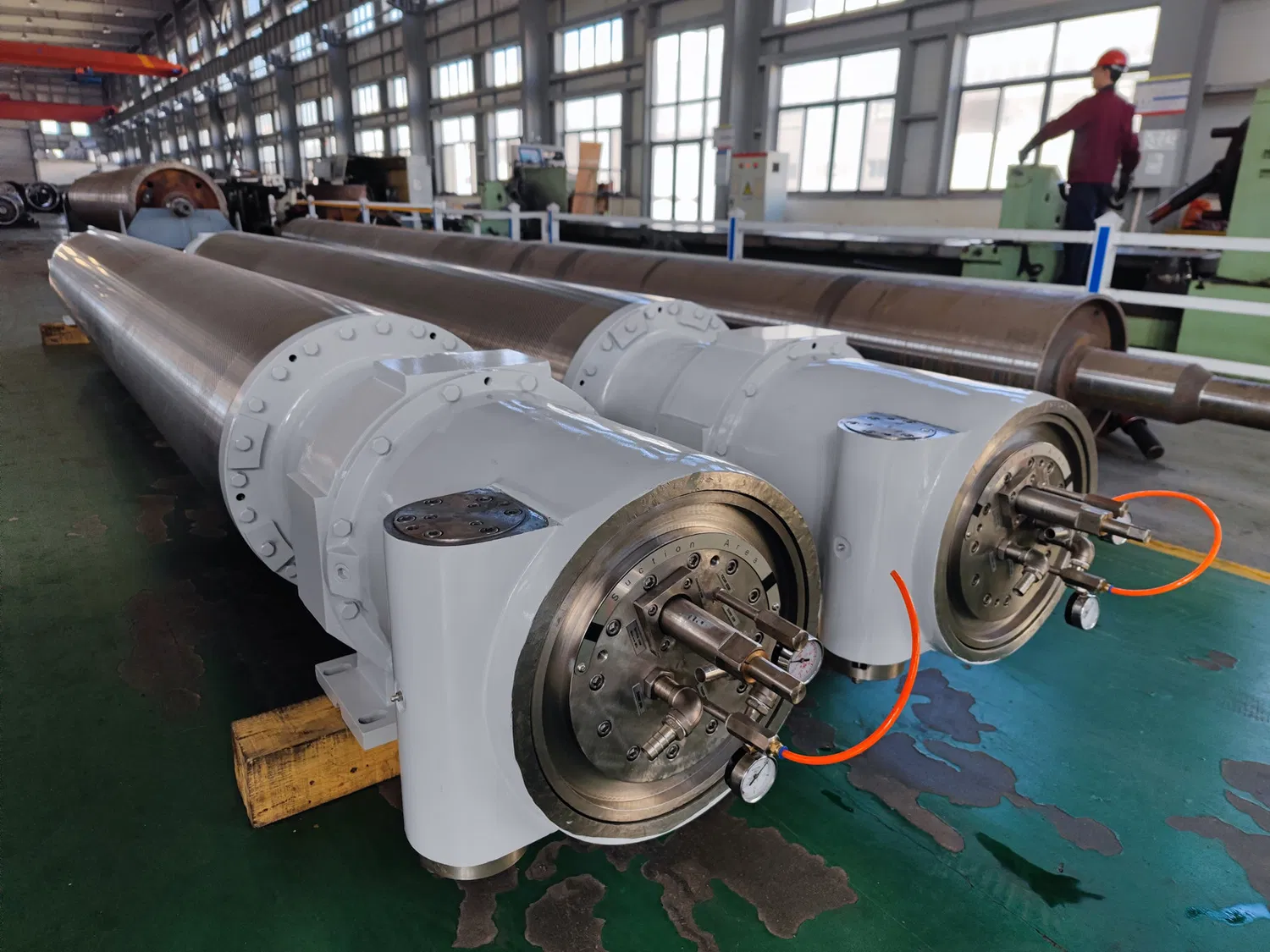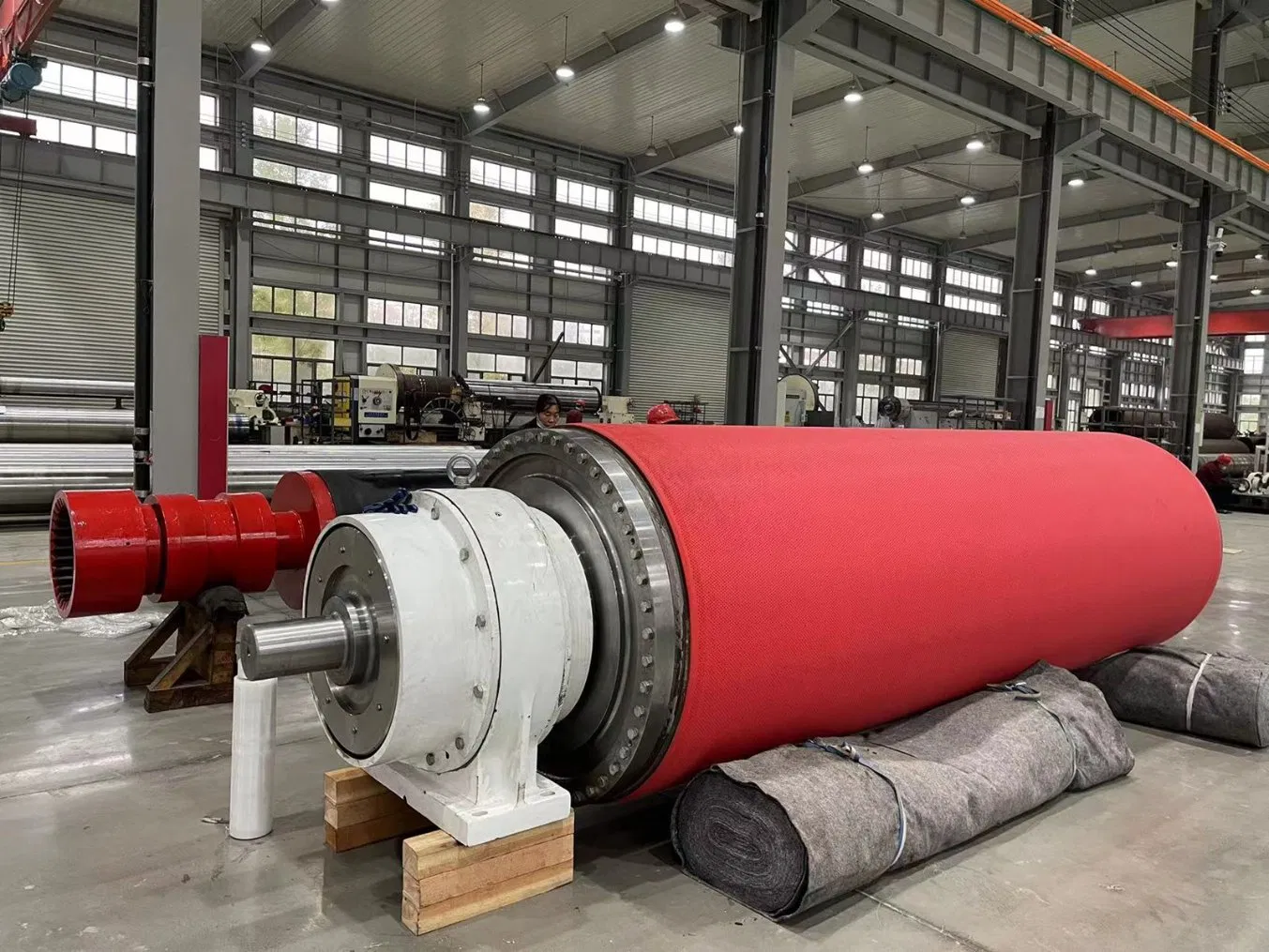In the complex and high-speed world of papermaking, few components are as fundamental or as critical as the paper machine roll. These cylindrical giants, from the forming section to the calender stack, are the heart of the machine, directly influencing production efficiency, operational costs, and, most importantly, the final quality of the paper. A single roll failure can lead to catastrophic downtime, costly repairs, and significant production losses. Therefore, understanding how to evaluate paper machine roll quality is not just a technical exercise for engineers; it is a cornerstone of a profitable and reliable papermaking operation. As a dedicated manufacturer and supplier, we believe in empowering our clients with the knowledge to make informed decisions. This comprehensive guide details the essential criteria and processes for assessing the quality and integrity of paper machine rolls, whether you are procuring new components, receiving refurbished ones, or conducting routine maintenance.
A Comprehensive Guide on How to Evaluate Paper Machine Roll Quality
A thorough evaluation of a paper machine roll is a multi-faceted process that goes far beyond a simple visual check. It involves a deep dive into material science, precision measurement, and dynamic performance analysis. A high-quality roll must excel in all these areas to withstand the harsh operating environment of heat, pressure, moisture, and high rotational speeds. Here are the five key pillars of roll evaluation.
1. Material Composition and Structural Integrity
The foundation of any durable roll is the material it's made from. The choice of material—be it chilled cast iron, forged steel, granite, or advanced composites—depends on the roll's specific application (e.g., press, dryer, calender). The evaluation must confirm:
- Correct Material Grade: The material must match the engineering specifications. This is verified through material test reports (MTRs) from the foundry, which detail the chemical composition and mechanical properties. * Hardness: Hardness (measured in Rockwell, Brinell, or Shore) is critical for wear and marking resistance. The hardness must be uniform across the roll face to prevent uneven wear. Portable hardness testers can be used for verification on-site.
- Internal Integrity: The roll body must be free from internal defects like porosity, inclusions, or cracks, which can lead to catastrophic failure under load. Non-Destructive Testing (NDT) is essential here.
- Ultrasonic Testing (UT): UT sends high-frequency sound waves through the material to detect subsurface flaws. It is the primary method for verifying the internal soundness of the roll body and journals.
- Magnetic Particle Inspection (MPI): MPI is used on ferromagnetic materials to detect surface and near-surface cracks that might be invisible to the naked eye.
2. Dimensional and Geometric Accuracy
A paper machine is a precision instrument, and its rolls must meet incredibly tight dimensional tolerances to function correctly. Even minuscule deviations can lead to paper defects like barring, inconsistent sheet profiles, and web breaks.
- Diameter and Roundness: The roll's diameter must be consistent along its length (except for the crown). High-precision micrometers or laser measurement systems are used to check for any out-of-roundness conditions.
- Total Indicated Runout (TIR): TIR measures the total variation in a roll's surface as it rotates 360 degrees. It is a critical indicator of how true the roll will run. Excessive TIR causes vibration and cyclical pressure variations in the nip, leading to poor paper quality. A low TIR value is a hallmark of a precision-manufactured roll.
- Crown Profile: Many rolls, particularly in the press section, are not perfectly cylindrical. They are ground with a slight "crown" (a larger diameter in the center) to compensate for roll deflection under load. The crown profile must be precisely machined to the specified curve to ensure uniform nip pressure across the entire sheet width. A profilometer is used to verify the crown's accuracy.
- Journal Tolerances: The journals are the ends of the roll that sit in the bearings. Their diameter, roundness, and surface finish must be perfectly matched to the bearing specifications to ensure smooth rotation and long bearing life.

3. Surface Finish and Coating Quality
The roll's surface is where the magic happens—it's the interface with the paper sheet, felts, and doctor blades. The quality of this surface directly impacts paper finish, sheet release, and the lifespan of consumable parts.
- Surface Roughness (Ra): Measured in micrometers (µm) or microinches (µin), Ra quantifies the smoothness of the roll face. The required Ra varies by application; a supercalender roll requires a mirror-like finish (low Ra), while a press roll may need a specific texture for water removal. A profilometer is used to measure and certify the surface finish.
- Surface Condition: The roll face must be free of any defects such as chatter marks (from grinding), feed lines, pitting, scratches, or corrosion. These imperfections can transfer to the paper sheet or cause premature wear on doctor blades and felts.
- Coating Integrity: For coated rolls (e.g., rubber, polyurethane, chrome, tungsten carbide), the evaluation must include the coating itself. Check for proper bonding to the base roll, uniform thickness, and any signs of cracking, blistering, or delamination.
4. Dynamic Balancing
As rolls rotate at high speeds, any uneven weight distribution is magnified, creating immense centrifugal forces. This imbalance leads to vibration, which can damage bearings, the machine frame, and ancillary equipment, not to mention severely degrading paper quality.
- Static vs. Dynamic Imbalance: Static imbalance is an uneven weight distribution that is apparent even when the roll is at rest. Dynamic imbalance only reveals itself when the roll is spinning and involves uneven weight distribution along the length of the roll. All paper machine rolls require dynamic balancing.
- Balancing Grade: The quality of the balance is specified by an ISO grade (e.g., G2.5, G1.0). The required grade depends on the roll's operating speed—the faster the speed, the more stringent the balancing grade. A balancing certificate from the manufacturer should always be provided, detailing the final residual imbalance at both ends of the roll.
Applying Evaluation Principles: From Procurement to Maintenance
Knowing the criteria is one thing; applying them effectively is another. A proper evaluation framework should be integrated into the entire lifecycle of the roll.
During Procurement: When selecting a supplier, don't just look at the price. Ask for their quality control procedures. Request sample documentation, including material certificates, dimensional inspection reports, and balancing certificates. A reputable supplier will be transparent and proud to share their quality data. This is the first and most critical step in ensuring you receive a high-performance component.
Upon Receiving a New or Refurbished Roll: Never install a roll straight from the shipping crate without inspection. Conduct a thorough receiving inspection. Visually check for any shipping damage. Most importantly, cross-reference the supplied quality documentation with the physical roll. Verify key dimensions, check the surface finish, and ensure all paperwork is in order. This simple step can prevent the installation of a faulty or incorrect roll, saving hours of costly downtime.
During In-Service Operation: The evaluation doesn't stop after installation. Continuous monitoring is key to predicting failures and planning maintenance. Implement a condition-monitoring program that includes regular vibration analysis to detect imbalance or bearing issues, thermal imaging to spot overheating, and routine visual inspections of the roll surface during machine shutdowns.

Our Manufacturing Excellence: The Foundation of Reliable Rolls
As a leading paper machine roll manufacturer, we understand that quality cannot be inspected into a product; it must be built in from the very beginning. Our entire production process is designed around the rigorous evaluation criteria detailed above. Our commitment to quality is how we ensure every roll that leaves our facility delivers superior performance and reliability.
Our process begins with stringent material sourcing. We partner exclusively with certified foundries and steel mills that provide complete material test reports for every single billet and casting. Before any machining begins, we perform our own independent NDT to verify the internal integrity of the raw material.
Our machine shop is equipped with state-of-the-art CNC (Computer Numerical Control) lathes and grinders. These machines, operated by highly skilled technicians, allow us to achieve the tightest dimensional and geometric tolerances, from the crown profile to the journal fits. Every critical dimension is verified using calibrated laser trackers and coordinate measuring machines (CMM).
Finally, every roll undergoes a meticulous dynamic balancing procedure on our advanced balancing machines. We balance rolls to a grade that often exceeds the customer's specification, ensuring smooth, vibration-free operation even at the highest machine speeds. A detailed and certified report accompanies every roll we ship.
Your Partner in Papermaking: Custom Solutions & Support
We pride ourselves on being more than just a supplier; we are a partner to our customers. We understand that every paper mill has unique needs and challenges. That's why we offer a flexible and customer-centric approach to business.
For Business & Individual Orders: Whether you are a large, multi-machine corporation requiring a full set of rolls or a smaller operation needing a single replacement, we welcome your business. We support both wholesale and individual purchases, with a flexible MOQ (Minimum Order Quantity) policy designed to meet your specific requirements.
Customization and Engineering: Our in-house engineering team is ready to assist you. We can manufacture rolls precisely to your existing OEM drawings or collaborate with you to design custom rolls for new applications or to solve persistent production problems. From specialized material selection to unique surface coatings and crown profiles, we can engineer the perfect solution.
Comprehensive After-Sales Service: Our relationship doesn't end upon delivery. We offer a full suite of after-sales services, including roll repair, journal replacement, precision grinding, and re-balancing. Our team can also provide expert consultation on how to evaluate paper machine roll quality within your own maintenance program, helping you extend the life of your assets and optimize performance.
In conclusion, the quality of your paper machine rolls is directly tied to the quality of your final product and the efficiency of your operation. By implementing a systematic evaluation process based on material integrity, dimensional accuracy, surface condition, and dynamic balance, you can ensure the reliability and performance of these critical assets. Partnering with a manufacturer who builds these principles into every step of their process is the surest way to secure a foundation of quality for your entire papermaking line.

For more detailed information, please visit our official website:paper machine roll quality
About the author: Dr. Alistair Finch is the Head of Roll Technology at our company, bringing over 25 years of experience in metallurgy and paper machine component engineering. He specializes in advanced roll coatings and non-destructive testing methodologies. Dr. Finch is passionate about helping paper mills enhance their operational efficiency and product quality by demystifying the complex science behind high-performance rolls and sharing best practices for their evaluation and maintenance. ---


